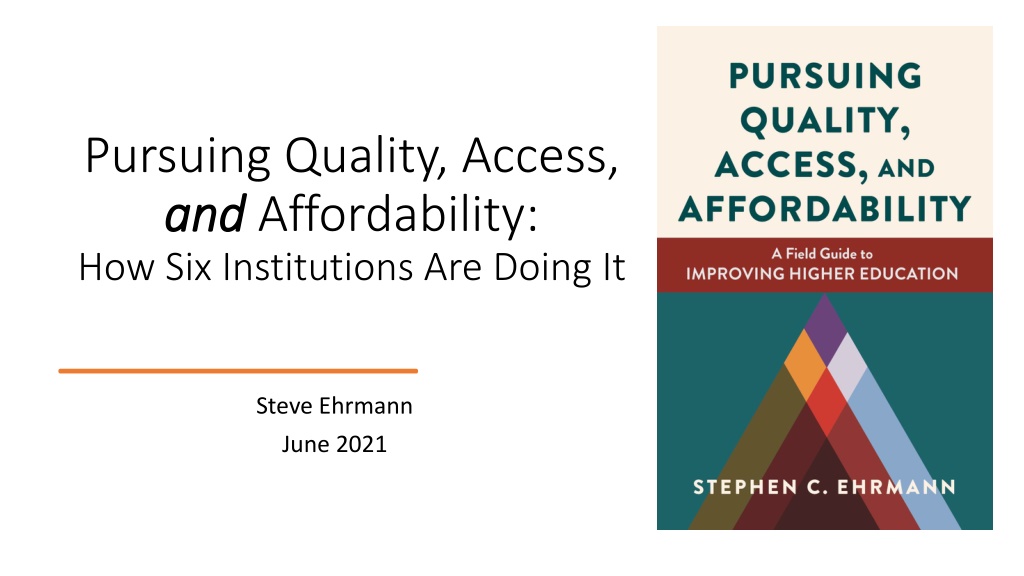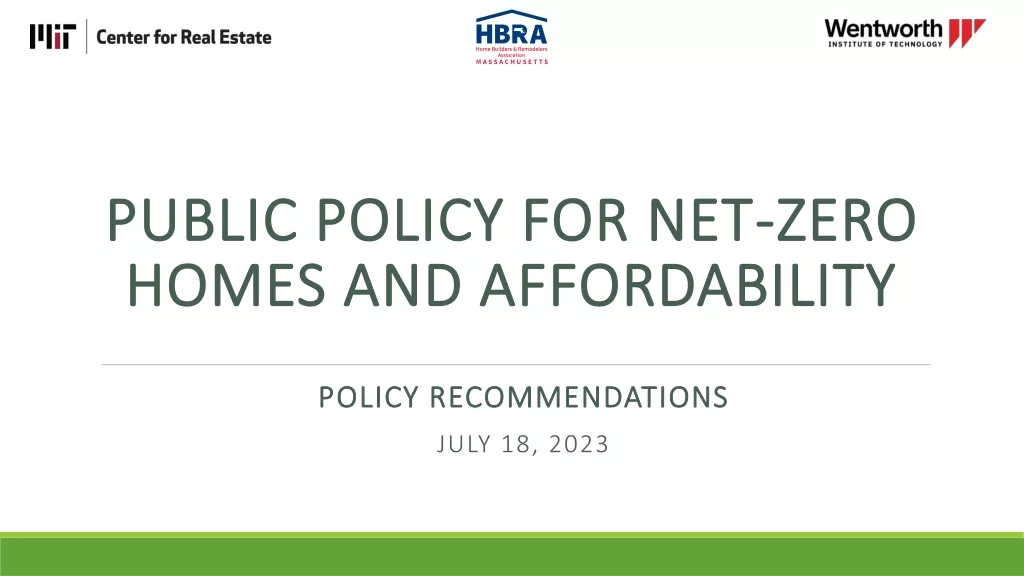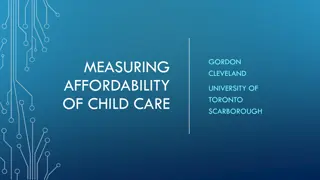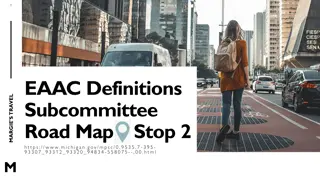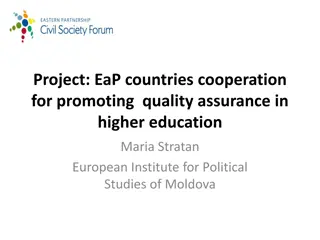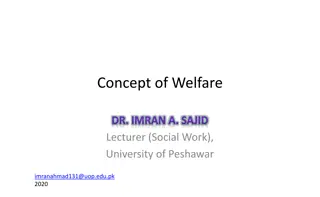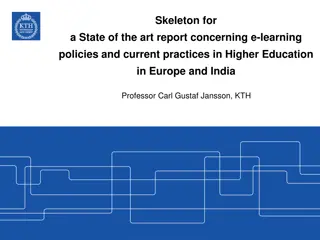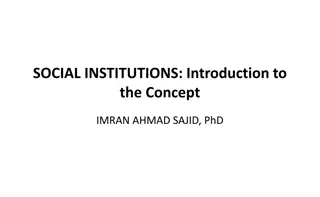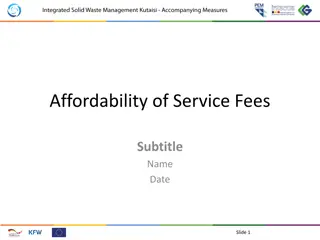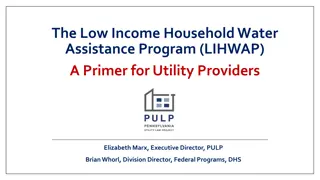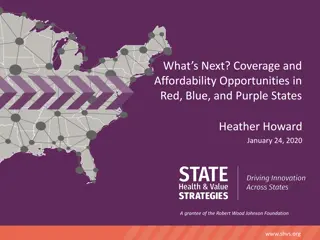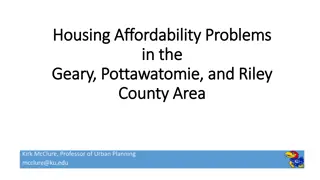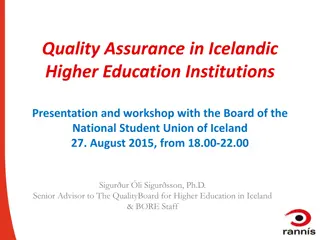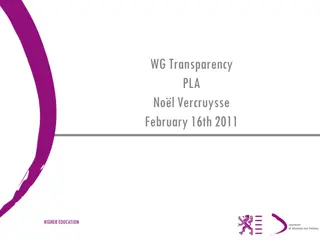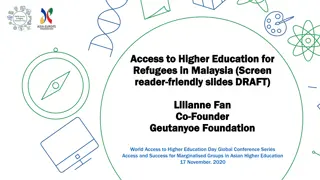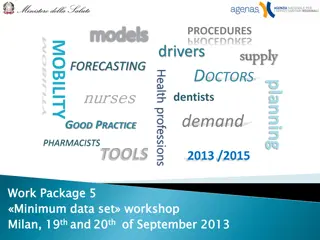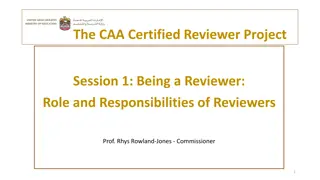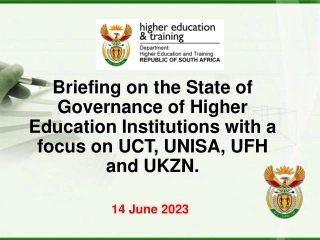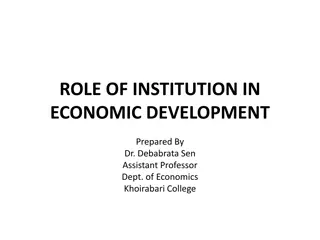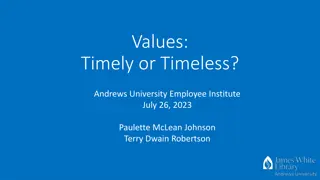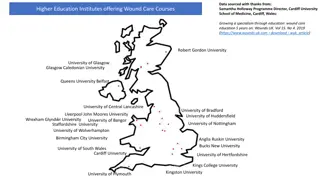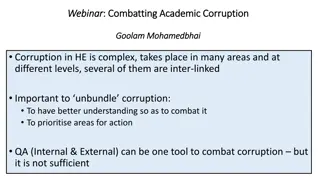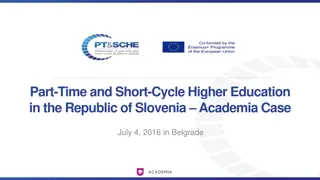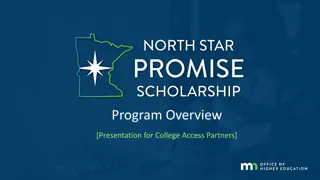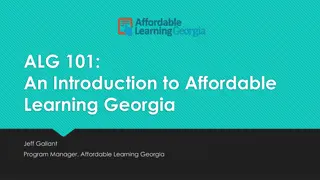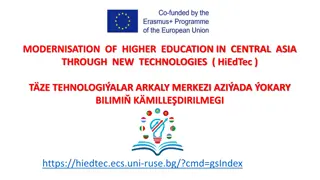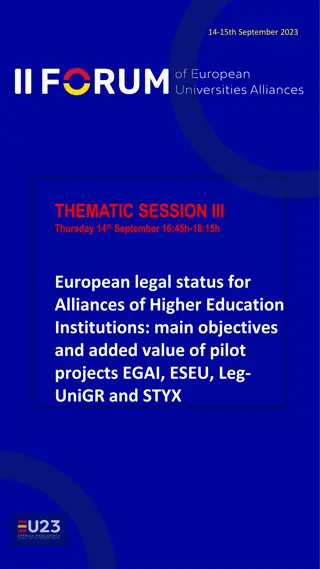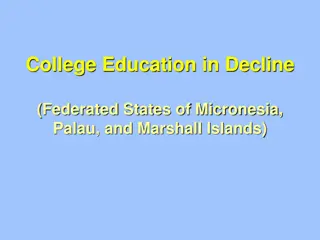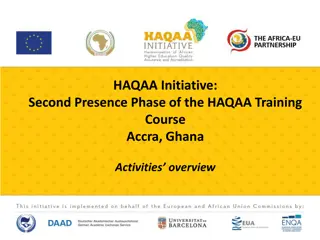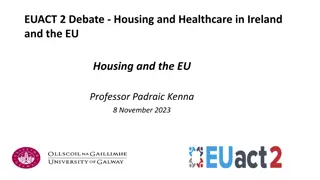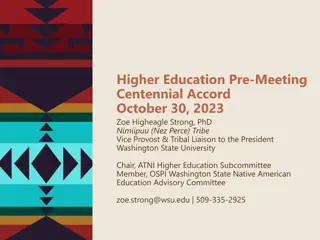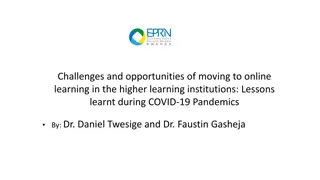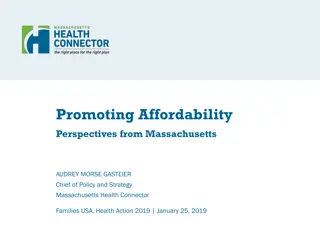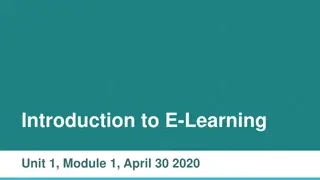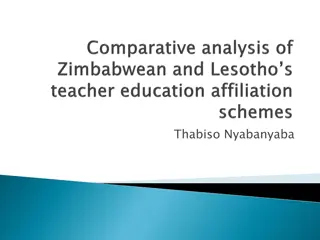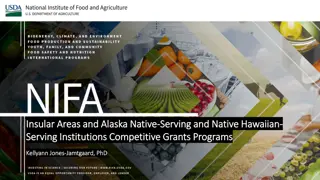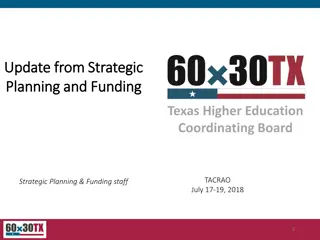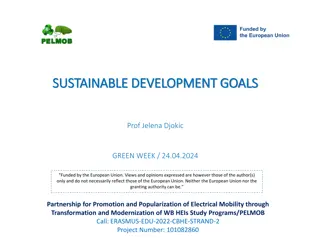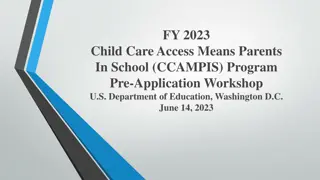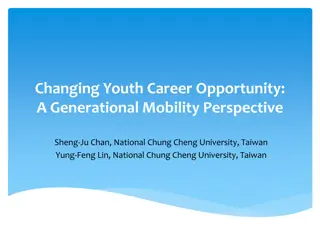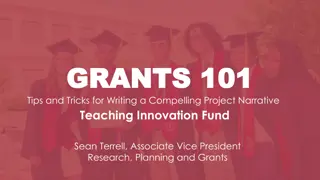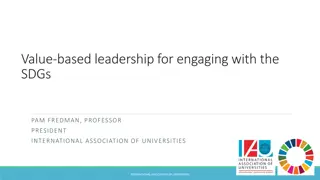Pursuing Quality, Access, and Affordability in Higher Education Institutions
This research delves into how six institutions tackle the challenges of enhancing quality, ensuring access, and maintaining affordability in higher education. It explores the concept of the iron triangle and how institutions can achieve threefold gains by improving quality, expanding access, and lowering per-student costs. The study reviews the experiences of Georgia State University, Governors State University, Guttman Community College, Southern New Hampshire University, University of Central Florida, and University of Central Oklahoma in making significant advancements in these areas.
Download Presentation

Please find below an Image/Link to download the presentation.
The content on the website is provided AS IS for your information and personal use only. It may not be sold, licensed, or shared on other websites without obtaining consent from the author. Download presentation by click this link. If you encounter any issues during the download, it is possible that the publisher has removed the file from their server.
E N D
Presentation Transcript
Pursuing Quality, Access, and and Affordability: How Six Institutions Are Doing It Steve Ehrmann June 2021
Context for this research 1. Iron Triangle: belief that either institutional quality, access, or affordability can be improved only by sacrificing one or both of the other(s). (Immerwahr et. al., 2008) 2. Despite that belief, most institutions host a scattering of unrelated initiatives, each intended either to: Improve quality (e.g., new syllabus for a course; modern laboratory equipment, honors program); or Extend access (e.g., new recruiting strategies, more advisors); or Maintain affordability (e.g., new scholarship programs; trimming or slashing budgets) Immerwahr, J., Johnson, J., & Gasbarra, P. (2008). The iron triangle: College presidents talk about costs, access, and quality. https://eric.ed.gov/?id=ED503203
3. Quality, Access, and Affordability Decades ago, accreditors rated institutions quality by their resources, e.g., their faculty, facilities, and entering students In that context, to improve quality, access, and affordability, enlarge class sizes Access gain: admit more students Affordability gain: lower per student instructional costs while increasing revenue Quality gain: use that revenue to retain and hire even better faculty One set of actions; three kinds of results = making 3fold gains Today quality includes how well students actually learn Using that definition, what institutional changes could produce 3fold gains?
Goals of my Research, 2016- Have any institutions made 3fold gains in recent years? If so: Is there a conceptually simple way to describe how to do it? How did each institution develop the capacity?
Six institutional case histories Six institutional case histories 1. Georgia State University 2. Governors State University 3. Guttman Community College 4. Southern New Hampshire University s College for America programs 5. University of Central Florida 6. University of Central Oklahoma
Four pre Four pre- -existing institutions existing institutions 1. Georgia State University 2. Governors State University 3. Guttman Community College 4. Southern New Hampshire University s College for America programs 5. University of Central Florida 6. University of Central Oklahoma
How these institutions are making 3fold gains (Incomplete, oversimplified explanation!) Over the years, their students engage in a series of activities that: Motivate them to invest exceptional thought and effort Usually require many kinds of interpersonal interaction, often with a variety of people AAC&U and NSSE created a list of such activities they called High-Impact Practices (HIPs) Association of American Colleges and Universities National Survey of Student Engagement
Twelve High Twelve High- -Impact Practices (HIPs): Impact Practices (HIPs): First-year experiences Common intellectual experiences Learning communities Writing-intensive courses Collaborative assignments and projects Undergraduate research Diversity/global learning Service learning Community-based learning Internships Capstone courses and projects ePortfolios High-Impact Educational Practices: What They Are Who Has Access to Them and Why They Matter by George D. Kuh (AAC&U 2008) Follow-up study: Five High-Impact Practices: Research on Learning Outcomes, Completion, and Quality, by Jayne E. Brownell and Lynn E. Swaner
HIPs and 3Fold Gains HIPs improve learning outcomes for all students while being even more effective for students from underserved groups These improvements in quality and equity also increase Retention Graduation rates Speed to graduation That is, they Save students and the institution time and money (affordability) Increase institutional revenue and graduates life-time earnings
Educational strategies that sustain one another These institutions have been developing arrays of educational strategy that help one another succeed, e.g., Writing intensive courses Service learning a degree that systematically prepares students to signature work in the capstone Use of student peer assistants to help faculty facilitate active and collaborative learning activities
To institutionalize and sustain such educational strategies Organizational foundations must be strengthened For example: In order to have many students engaging in undergraduate research and service learning off-campus, create an office that can build and sustain a set off-campus sites that can be used year after year (like clinical sites in health care education) Learning spaces suitable for several kinds of learning activity, beyond listening and taking notes Faculty rewards system that encourages faculty to investing time to improve learning outcomes
To institutionalize and sustain such educational strategies Some interactions with the institution s wider world should be realigned For example Use accreditation to focus and accelerate development of your institution s constellation Share experiences and efforts with institutions on similar journeys Realign public image and recruiting to reflect the institution s emerging transformation
A Constellation of Initiatives, Bit by Bit Growing a constellation of initiatives at Georgia State. Educational strategies (e.g., Freshman Learning Communities, a HIP) Organizational foundations (e.g., Office of Student Success) Wider world interactions (e.g., College to Career program)
Looking Backward: The Institutional Journey Preliminaries: some ambitious initiatives each make widely-valued, sustained gains (e.g., to improve first-year retention) but they may not be seen as parts of a constellation yet Early successes and other factors can lead to a growing coalition willing to commit to improving quality, access, and affordability At that point, can tackle additional foundations and wider world interactions tied to institutional culture and identity
Think about Your Own Institution Pressing needs to improve some facets of quality? Access? Affordability? Are any current institutional attributes and recent initiatives potentially part of a constellation that create such gains? At scale? Still embryonic?
https://bit.ly/3fold-Stylus Table of contents, endorsements Free access to Chapter 1 (why it s urgent for institutions to improve quality, access, and affordability) Kindle version available from Amazon. Review by Steve Mintz in Inside Higher Education: http://bit.ly/Mintz-3fold Interview in Inside Higher Education: http://bit.ly/IHE-Ehrmann ehrmannsteve@gmail.com
